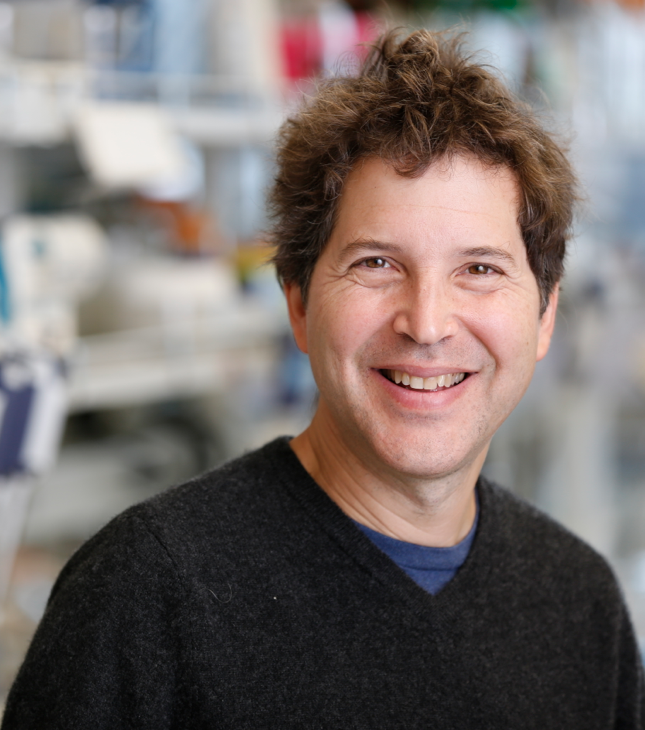
The Marchand Lab aims to utilize fundamental approaches in synthetic biology, chemical biology, biosynthesis, and biomolecular engineering for reprogramming life at the nucleic acid level. The goal is to extend the nucleotide building blocks available in living systems for biosynthesis, and to use newly expanded metabolism for producing nucleic acids with emergent, programmable function. Our group currently focuses on xenonucleic acids with nucleobases that basepair orthogonally to the canonical genetic code (i.e. ATGC+XYWZ). These xenonucleic acids are all synthetic in source. Read More

Our group is focused on molecular technology development for a wide array of applications, from genomics and proteomics to molecular computing and digital data storage using DNA. To do this, we integrate expertise in synthetic biology, biophysics, biochemistry, computer science, and engineering. Current areas of focus include nanopore sensing, single-molecule protein sequencing, CRISPR-Cas, wet-lab automation, machine learning for biological systems design, and cyber-bio security. Read More

Ray’s research bridges materials science and environmental engineering to create unique solutions to urban water supply sustainability. We design novel composite materials to: (1) selectively adsorb and/or degrade toxic, persistent contaminants, (2) remove contaminants in urban stormwater, and (3) recover value-added products from waste streams. We investigate interfacial reactions using surface chemistry techniques to better understand the structure-function relationships of our materials for their intended applications. Read More

Our group develops methods in the theory and computational modeling of nanoscale devices, and applies them to emerging technologies. In particular, we are interested in emerging devices where quantum mechanics plays a fundamental role in determining device behavior. Such devices have the potential to impact the fields of low power electronics and bio/chemical sensing technologies. We use both methods developed by us and other groups to design and simulate nanodevices and explain experiments. Our current research involves charge transport in (i) emerging memory devices where atom movement is central to information storage, (ii) bio nanostructures (DNA and peptides), (iii) molecular nanostructures and (iv) solar cells. Read More

Our lab studies the mitotic spindle, a molecular machine that organizes and separates duplicated chromosomes during cell division, thereby ensuring equal partitioning of the genetic material. To uncover how this machine operates, we are reconstituting spindle functions using pure components and applying new biophysical tools for manipulating and tracking individual molecules, such as laser trapping and ultrasensitive fluorescence microscopy. Read More

Professor Baker's research aims to predict the structures of naturally occurring biomolecules and interactions and to design new molecules with new and useful functions. Building on intial computational designs, Baker uses experiment to better understand the principles underlying catalysis and binding in order to design novel proteins and enzymes. Read More

Research in the Baneyx laboratory lies at the confluence of synthetic biology, nanotechnology, molecular engineering and materials science. We are a lead lab in CSSAS, the Center for the Science of Synthesis Across Scales, an Energy Frontier Research Center (EFRC) directed by Prof. Baneyx that brings together investigators from six universities and a national laboratory. Inspired by nature’s ability to fabricate intricate and often hierarchical materials with outstanding transport, optical, and magnetic properties, we seek to understand the rules that underpin the interaction of combinatorially-selected solid-binding peptides with inorganic and synthetic interfaces. Read More

In our lab, we work on many aspects of micro and nano electro mechanical systems (MEMS / NEMS). This research tends to be very interdisciplinary, and we have collaborations in biology, chemical engineering, bioengineering, computer science, and other departments. We have built, for example, self-assembling microstructures, biomedical implants, systems for docking of picosatellites, and walking microrobots. Read More

Reversible enzymatic modifications of protein side-chains, also known as post-translational modifications or PTMs, confer complexity to biological systems by dynamically regulating the location, structure, and activity of proteomes. Elucidating the mechanistic contributions of post-translationally modified proteins to key cellular processes, such as gene transcription, is critical for understanding normal human development and to identify new therapeutic targets in diseases arising from the misregulation of PTMs. To accomplish these goals, we apply a seamless combination of chemical and molecular biological tools to investigate uniformly modified proteins in well-defined biophysical and biochemical systems. Read More

Dr. Gamble's research focuses on surface modification and characterization of model biomedical systems including fundamental research towards the preparation and characterization of DNA and protein microarrays. She is also involved in the development of new techniques that will enable improved analysis of the biomolecule-surface interface and improved chemical imaging of biologically relevant samples. Read More